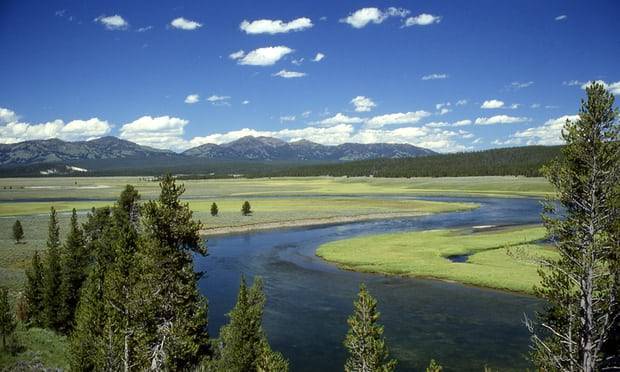Hayden Valley, a broad valley that holds Yellowstone Lake, was christened for Dr Ferdinand V Hayden, a geologist and surveyor. He also advocated for the extermination of tribal people who refused to comply with federal dictates.
A group of Native Americans say such names can no longer stand. The Great Plains Tribal Chairman’s Association, an organization of tribal chairmen of 16 Sioux tribes from Nebraska and the Dakotas, is pursuing an application to change Mount Doane to First Peoples Mountain and Hayden Valley to Buffalo Nations Valley.
The proposal echoes moves to take down monuments commemorating Confederate leaders and proponents of slavery. And it mirrors other efforts across the US – and online – to rename landmarks bearing appellations rooted in racism.
“We’re not against certain names,” said William Snell, executive director of the Rocky Mountain Tribal Leaders Council, who supports the Yellowstone renaming. “But we’re not for names where individuals have been involved with genocide, where elders and children have been killed and there have been some traumatic events in our history that don’t meet standards of honor.”
The US Board on Geographic Names has received a slew of requests since the early 1990s related to the word “squaw”, which has an unclear history but is now recognized as insulting, and has given new names to everything from mountains to waterways and neighborhood streets. Notably, in 2013, it changed Squaw Peak in Phoenix, Arizona to Piestewa Peak, after Lori Ann Piestewa, the first Native American woman to die in combat serving in the US military.
“We’d be driving down the freeway and saying: ‘Oh my God, why do we still have to look at this disparaging name?’” said Jack Jackson Jr, a lawyer and former Arizona state senate member whose father, Jack Jackson Sr, drafted several name-change bills during his 15-year career in the Arizona legislature. “Native people are always facing disparaging names and mascots.”
In 2016, the board approved changing the name of Harney Peak, a mountain in South Dakota named after the US army general William S Harney, who led troops in an 1855 battle against the Brule Sioux and killed women and children as well as warriors. Its new title is Black Elk Peak, for a man believed to be a survivor of the battle.
At Yellowstone, the name-change request has so far met with resistance. Local county representatives voted against it in early May, and in a motion the county commissioner, Tim French, said a name change was like “trying to change history”. The commissioners’ opposition could prove fatal. “The board on geographic names places a good deal of emphasis on local opinion,” said Lou Yost, its executive secretary.
The board, which meets monthly, has not yet scheduled a meeting to discuss the issue because it is waiting to hear from other state and federal officials.
Renaming efforts move more quickly online, where another grassroots effort is taking hold. The organization NativesOutdoors is both an outdoor apparel company and an Instagram account with 18,000 followers. The founder, Len Necefer, of the Navajo tribe, has been working for years to encourage Instagrammers to use original tribal names in the app’s geotagging feature instead of Americanized names.
Necefer himself used the Facebook geotagging system to identify four mountains surrounding the Navajo Nation, considered sacred boundaries, by their traditional names rather than the colonized terms.
In Colorado, he used the names Sisnaajiní and Dibé Nitsaa instead of Blanca Peak and Hesperus Mountain. To the west, he geotagged Arizona’s San Francisco Peaks as Dook’o’oosłiid. And in New Mexico, he tagged himself on Tsoodził rather than Mount Taylor.
“The creation of the first national parks, like Yellowstone and Glacier (national park), was predicated on the forced removal of indigenous populations from these areas,” Necefer told Outside Online earlier this year. “It created this myth that these are untouched wilderness areas.”
More about: #YellowStone
















































